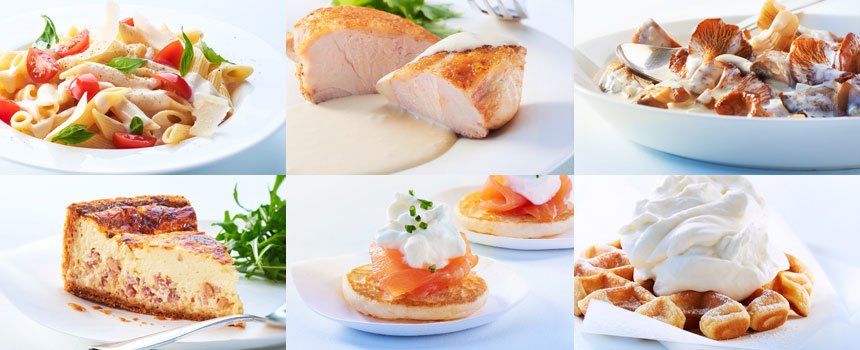



Cream is the fat coming from cow's milk and collected using centrifugal skimmers in dairies.
The term « cream » is therefore, reserved for the product made by skimming whole milk and containing at least 30% fat.
The term « double cream » applies to products containing at least 40% fat.
The term « light cream » applies to products containing between 12% and 21% fat.
To obtain the different levels of fat, it suffices simply to adjust the skimmer settings. Without pasteurisation or sterilisation, it is a « by itself cream », with a flavour that is soft and intact but very fragile, with a very short shelf-life and therefore rarely found (the word « by itself » is mandatory on the label) except... for those who live near a farm... Hence the necessity for heat treatment (pasteurisation, simple sterilisation or Ultra-High Temperature sterilisation – UHT) which lengthens its life, aids its preservation and lets it become... your partner in the kitchen !
In its natural state, the dairy cream coming directly from skimming is liquid. The texture of the cream will vary according to inoculation with starter cultures, the use of permitted additives (thickeners) and the fat content.
To obtain a thick cream, the cream is therefore inoculated with starter cultures. This results in the acidification of its taste and sets off the coagulation of proteins that will cause the texture to thicken. We call this a matured crème fraîche. A thick cream does not therefore have more fat than a liquid cream: there are thick creams at 40% fat and at 12%, just like liquid creams.
Recently, semi-thick creams have been developed, with an intermediate texture between liquid and thick.
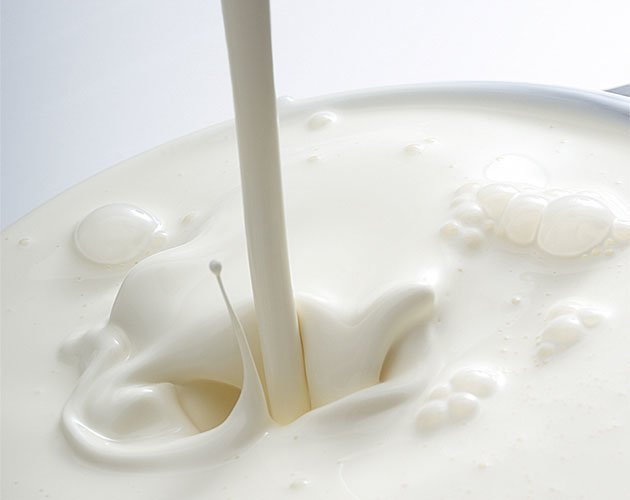
Cream is the fat coming from cow's milk and collected using centrifugal skimmers in dairies.
French AOC (Appellation d'Origine Contrôlée) creams which must now display the European PDO (Protected Designation of Origin) :
• Crème d’Isigny which is a thick crème fraîche (pasteurised) with a minimum fat content of 35% (very often 40%) made in the Manche region in Normandy.
• And, only recently, Crème de Bresse which is either a thick cream (minimum 30% fat) or a semi-thick cream (minimum 36% fat) and made in the Pays de Bresse region.
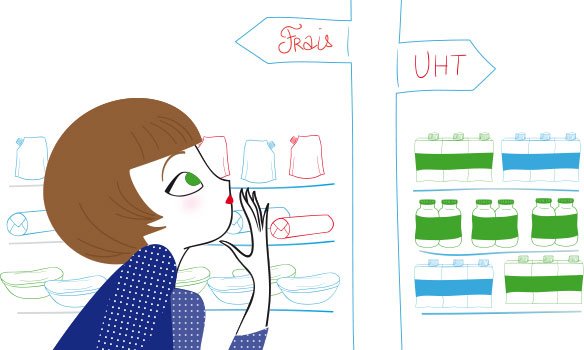
Depending on the store, the layout of shelves can differ: in some, all the creams (fresh and UHT) are in the chilled section while in others, the offers are separated: the fresh in the chilled section and the UHT, not far from the UHT milks ... not easy to find your bearings !
The important thing to know is that even a UHT cream bought from the chilled section in a store can be kept at room temperature at home.
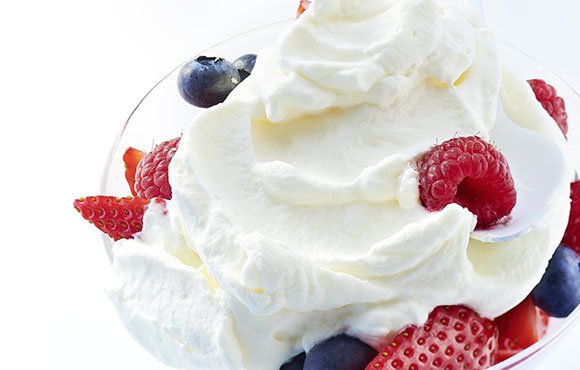
It is a liquid and light cream, pasteurised or sterilised. Whipping cream, the creme de la creme! This is a full-fat fresh cream, liquid and light, which has not been inoculated and is simply pasteurised. It can be kept several days in the fridge. With full fat (30% minimum) it has a high capacity for incorporating air bubbles when whipped, making it the ideal cream to make a very airy Chantilly or whipped cream !
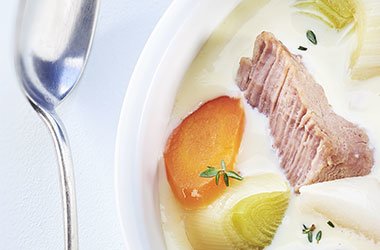
This is a soft liquid pasteurised cream that has been matured and has therefore become thick and with an acidic, aromatic taste.
The refrigerated shelf-life is a maximum of 30 days to be able to use the term ""fresh"".
Elle & Vire thick cream in a pouch, thanks to its innovative packaging that protects the cream from light and air, guarantees even 60 days refrigerated shelf-life ...
with the disadvantage that the word « fresh » cannot be used. To be used by itself, to appreciate the touch of freshness it brings to a tart and in sauces, but also in cooking of course.
Of course these two types of cream also exist with lower fat content, for those seeking lightness.


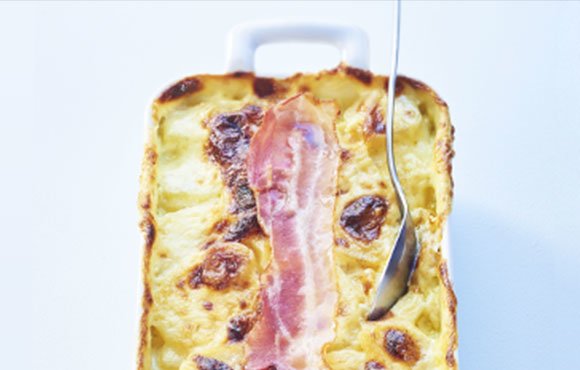
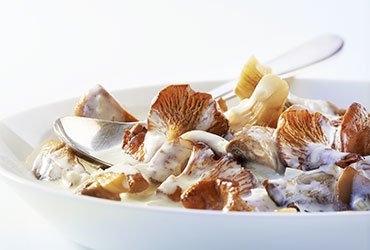

Exists as sterilised and UHT sterilised. This is a fresh cream, liquid and light, which has not been inoculated and which is simply sterilised or UHT sterilised then re-cooled and packaged in lightproof, airtight packages (for example, Elle & Vire Tetra Pak bricks ).
The UHT process uses a very high temperature for a very short time, which has the great advantage of preserving the nutritional, taste and functional properties of the cream. This allows the cream to be kept for several months and even to be stored at room temperature. It can perfectly well be used in cooking, whether for sauces or for your quiches and gratins. With full fat, it can also be used to make a Chantilly or whipped cream.

This cream is thicker than liquid cream. Since the UHT process does not allow inoculation with starter cultures to allow natural thickening of the texture, the careful use of additives increases the consistency of the cream, adding creaminess and softness in certain applications without the touch of acidity of a thick crème fraîche. Perfect for topping hot dishes, pasta or vegetables.
Of course these two types of cream also exist with lower fat content, for those seeking lightness.
